#catherine demongeot
Explore tagged Tumblr posts
Text
So I'm glad Catherine Demongeot never actually played Dolores Haze because even in an adaptation that does everything right and doesn't portray her as a s3x symbol, it's such a heavy role for a kid, but as a faceclaim/point of reference because I have trouble picturing people clearly in books...That's her. I mean, that is literally her.


#lolita novel#dolores haze#catherine demongeot#vladmir nabokov#lolita is not a love story#silly little tomboy chaos gremlin who is also incredibly strong and a spitfire...tell me she doesn't radiate that energy
55 notes
·
View notes
Text





zazie dans le métro (1960)
#zazie dans le métro#film#movie#cinema#art#edit#screencaps#photography#cinematography#60s#louis malle#catherine demongeot#carla marlier#queue
50 notes
·
View notes
Text
Knowing Nabokov considered the girl in the movie adaptation of this to be his perfect image of Dolores makes reading it so much funnier.

Say that, Queen!!!
20 notes
·
View notes
Text
On Dolores Haze's looks, proportions, height, weight and Tanner Stage.
Dolores at age 12: She is stipulated by Humbert to be close to her menarche. She is around in the second to third stage of breast and second to third stage of pubic hair. Furthermore, Dolores's height is shorter than the average height of the sources cited by Humbert. The material that Humbert cites is older, and the average height of girls in the 1940s and 1950s was higher than Humbert's material. Dolores' height is considerably shorter than other girls her age. Dolores body size at the age of 12 was 144.8cm/35.4kg, which is about the 25th percentile for 12-year-olds in the Stuart-Meredith survey (1946). Her three sizes are 69-58-74.
First of all, Dolores' birthday is set to 1/1, probably to make it easier to match the ages. Dolores disappeared when she was 14 years old. The definition of nymphet is 9 to 14 years old. In other words, as soon as Dolores falls out of the defined age of her nymphetness, "Lolita" disappears. Furthermore, her age at menarche is said to be 13 years and 9 months in this work, which is consistent with this. A nymphet is a girl who is (supposedly) in the period of menarche.
Stratz, known as a medical scientist, says the first stage of growth between the ages of 8 and 10. The second growth period is between the ages of 11 and 14. The defined age of a nymphet is almost the same as the combination of the full stage and the elongated stage. Stratz also states that menarche occurs at the age of 14, which coincides with the end of the nymphet's life. Stratz's research dates from the 1920s, a time when Humbert was romantically involved with Annabelle. In Lolita, Humbert states that menarche occurs between the ages of 10 and 17. Dolores falls outside this range at the age of 17 and died during childbirth. The defined age of a nymphet is 9-14 years old. The age at which puberty begins, which is the age at which breast development begins, is 10.7 years old, and the average age at menarche is 13 years and 9 months. This range is almost the same. "Lolita" was published in 1955, and according to the Kinsey Report (1953) published two years earlier, it was 13.1 years old. In other words, the age of menarche in the story is estimated to be late, and it would not be surprising if her breasts started developing at the age of nine. To make it short, nymphet is an early adolescent girl child. Nothing more, nothing less. She is appealing to a hebephile, but might not be to a pedophile or a ephebophile.
Humbert was born in 1910, and Annabelle was born in 1910-1911. They met in 1923, so Humbert is 13 years old and Annabelle is 12 or 13 years old. This is the age at which Dolores supposedly sexually experiments with a 13-year-old boy when she was 12 years old. Dolores' height speeds between the ages of 12 and 14. This is a typical increase in height that occurs after menarche. As of November, when Dolores was 13 years old, her menstruation was probably regular. Regular menstruation is evidence of further sexual maturation, and by the time menstruation has become regular, the human body has reached reproductive capabilities. Not like that means she can safely give birth, of course. Therefore, by this time, Dolores' s body is no longer even that of an "adolescent". Also around the same time, Humbert was getting tired of Dolores and calls her his "aging mistress".
It may be a misunderstanding from most people, but Dolores has pubic hair. A nymphet does not mean a hairless girl. This is because in the story, Humbert mentions that pubic hair appears at the age of 11.2 years, and Humbert also fantasizes about it. Furthermore, the age at which American girls developed pubic hair in the year Lolita was released and the time it was set was 11 years old. Menarche is a phenomenon that occurs after the development of pubic hair, and Dolores had pubic hair growing around the time she met Humbert, and he liked this fact. In addition, Humbert peeped at a girl's armpit hair on the subway.
Dolores' menarche occurred at the age of 12 years and 7 months, which is 1 year and 2 months earlier than Humbert's assumption for the age of menarche in New York and Chicago. It is possible that she matured physically earlier than Humbert expected, which may have contributed to Humbert becoming bored with her. The average age of menarche according to the Kinsey report was 13.1 years, and according to the study by Reynolds and Wines, it was 12.9 years. Dolores is not particularly precocious by actual American standards. From this perspective, it can be said that Humbert was betrayed by Dolores' unexpectedly rapid development in the American 1940's compared to a girl development in the European 1920's.
The body size values that Nabokov is thought to have quoted are thought to be Baldwin-Wood's 1923 statistics. This value is a smaller physique value than the statistics at the time of the work (1946). Therefore, it can be said that Dolores, which was small even in 1923, was even smaller at that time.
Dolores is 144.8 cm, 35.4 kg, and her 3 sizes are 69-58-74. By the time Dolores is thirteen, she is 149.1 cm, at 17, Dolores is 157.5 cm.
At 14, Dolores is 152.4 cm tall and weights 40.8 kilograms. At the time, the average height and weight of a 12-year-old was 151.5 cm and 39.7 kg, so 14 year old Dolores was roughtly the same build as the average 12-year old, even smaller.
Sue Lyon (poor, poor child) and Dominique Swain were terrible choices to play Dolores Haze. While I oppose a child actress for poor Lola, I also despise the fact they casted girls who looked outside the range of attraction of a hebephile.
To add something: If Annabel Leigh was even real (which one may or may not doubt), and we compare her to Dolores Haze…We must consider historical context:
Since the late 19th century, the age of menarche has tended to be earlier worldwide. However, in Europe during the period between World War I and World War II, menarche was delayed. This is believed to be due to malnutrition caused by the war.
Thus, the European girl child Humbert imagines is young looking at her nymphancy stage. On the other hand, however, American society and American girls have not been affected by the effects of both world wars, and the age of menarche is steadily advancing. The story of "Lolita" is about the emergence of a (healthy, developing) American girl versus Humbert, who idealized a girl who matured late because of the war.
The defined age of the nymphal period is not only a turning point or temporality of the book's story, but also a scientific one. And Humbert is being carried along by (the development of) postwar America, dragging along not only his pre-World War II memories but also his study of the physique and sexual characteristics of girl children of the early 20th century, instead of healthy, well-fed, stress free girl children of the mid 20th century.



Only one of these girls is a real "nymphet", by Humbert's standards. But nymphets aren't real to begin with.
Third update:
Humbert definitely was not been feeding her properly, considering girls during puberty win from 5 to 10 kilograms a year. He himself said he refused to let her have breakfast unless she did her "morning duty", threatened to kill her "as a joke" if she gained weight superior to the measurements that were taken when she was around 11. Stunted growth is a telltale sign of malnourishment.
#dolores haze#humbert humbert#lolit4#nymph3t#vladimir nabokov#faunlet#nymphage#nymphancy#tanner stages#puberty#Catherine demongeot#Sue Lyon#dominique swain
25 notes
·
View notes
Text



Catherine Demongeot on the set of ‘Zazie dans le métro’
10 notes
·
View notes
Text

Happy 74th, Catherine Demongeot.
With Philippe Noiret during the making of Louis Malle’s Zazie dans le Métro (1960).
13 notes
·
View notes
Text



zazie dans de le métro (1960) dir. louis malle
#zazie dans le métro#zazie in the metro#louis malle#catherine demongeot#philippe noiret#carla marlier#film aesthetic#film stills#film#vintage films#french cinema#french film#60s film#60s aesthetic#60s cinema#60s vintage#french films#vintage#film gifs
10 notes
·
View notes
Photo
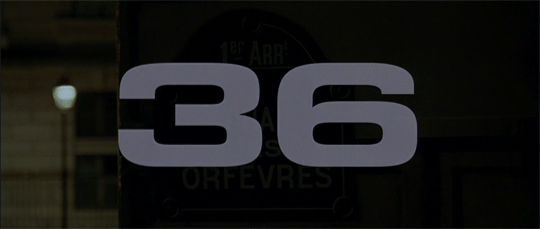
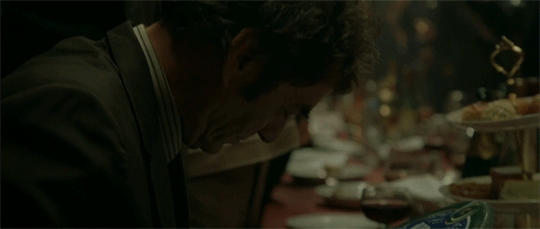


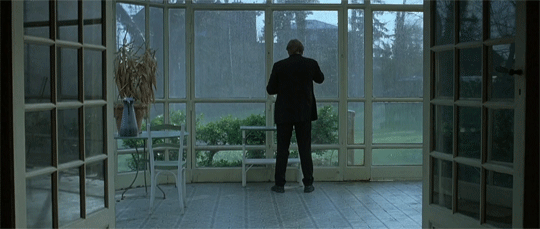


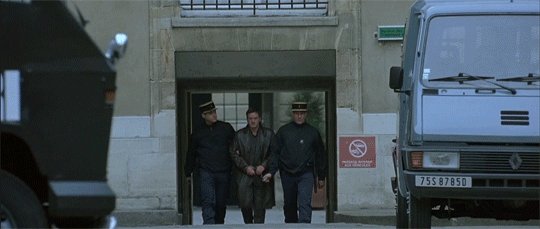
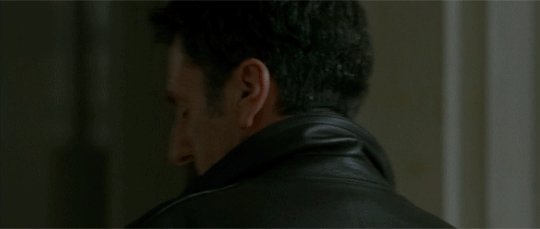
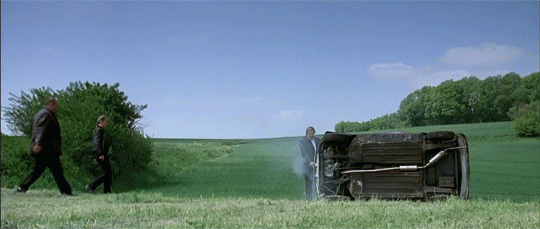
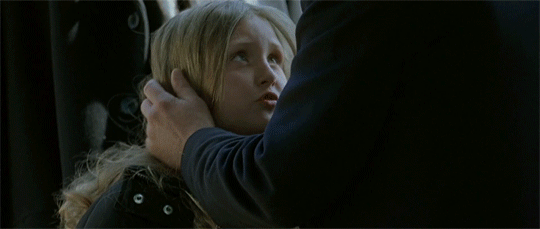
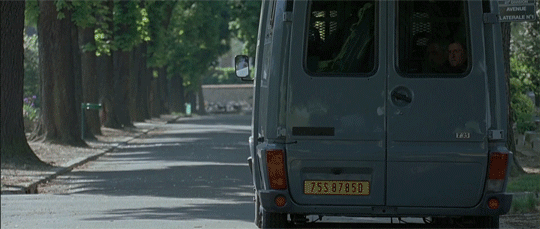
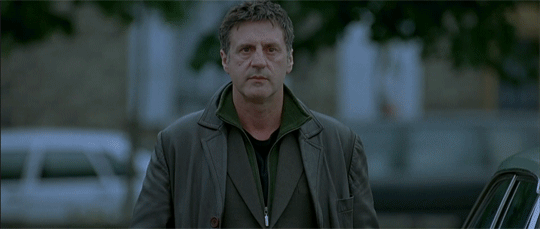

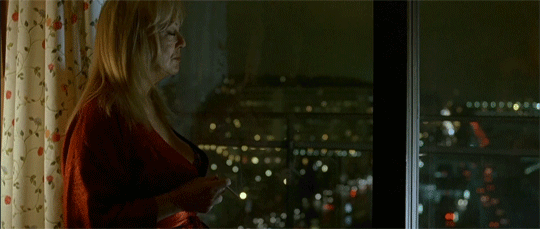
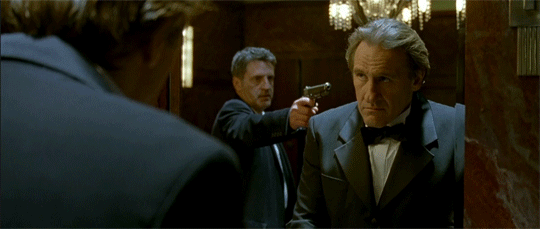
36, Quai des Orfèvres (2004)
Réalisateur: Olivier Marchal
#daniel auteuil#gérard depardieu#andré dussollier#mylène demongeot#francis renaud#catherine marchal#36 quai des Orfèvres#olivier marchal#french movie
4 notes
·
View notes
Text
𝑷𝒂𝒓𝒂𝒍𝒍𝒆𝒍𝒔 𝒃𝒆𝒕𝒘𝒆𝒆𝒏 𝒍𝒐𝒍𝒊𝒕𝒂 𝒂𝒏𝒅 𝒕𝒉𝒆 𝒗𝒊𝒓𝒈𝒊𝒏 𝒔𝒖𝒊𝒄𝒊𝒅𝒆𝒔 ‧₊ ☁️⋅♡ ࣪ ִֶָ☾.




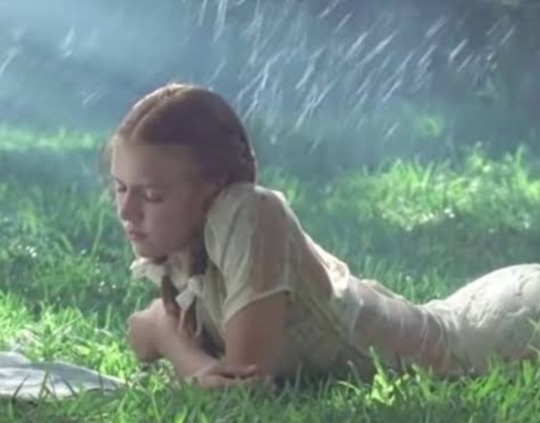


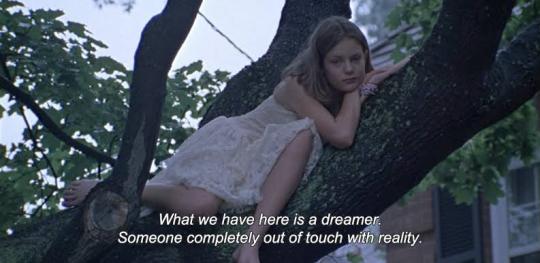

People call Vladimir Nabokov a disgusting creep for writing from the perspective of a pedophile when in reality if you read the book, Humbert Humbert is not likeable in the slightest. He's an unreliable narrator that's so stuck in his own delusions that he can't see how miserable dolores is because of him. Nabokov is an incredible writer and lolita is really well written- it's dreamy and poetic because that's what Humbert Humbert wants you to see but occasionally the mask slips and the horrifying reality of the situation peaks through, it's your responsibility as the reader to read in between the lines to see the story for what it is- not a romance. It's a great satire in the sense that it's pathetic to see Humbert Humbert think he's oh so charming and these "nymphets" are oh so in love with him. Dolores' trauma is obvious to any competent reader, I don't know how people are so charmed by Humbert Humbert that they can't see how dolores' defiance which he refers to as "teenage rebellion" or "tantrums" is a very apparent cry for help. Lolita is a Gothic horror, a cautionary tale. It's a genius work of art and what's most horrific about it lies in the aftermath of its release, how it's so normalised to sexualise little girls that blatant pedophilia is interpreted as a tragic love story. Nabokov himself referred to dolores as his "poor little girl". He had a lot of empathy for her and it is so heartbreaking to see her being portrayed as this temptress when in reality she is a 12 year old tomboy who likes comics and playing in the dirt. Catherine Demongeot (image on the left) is what Nabokov imagined lolita to look like while on the right is how lolita is perceived by the media. The images speak for themselves.

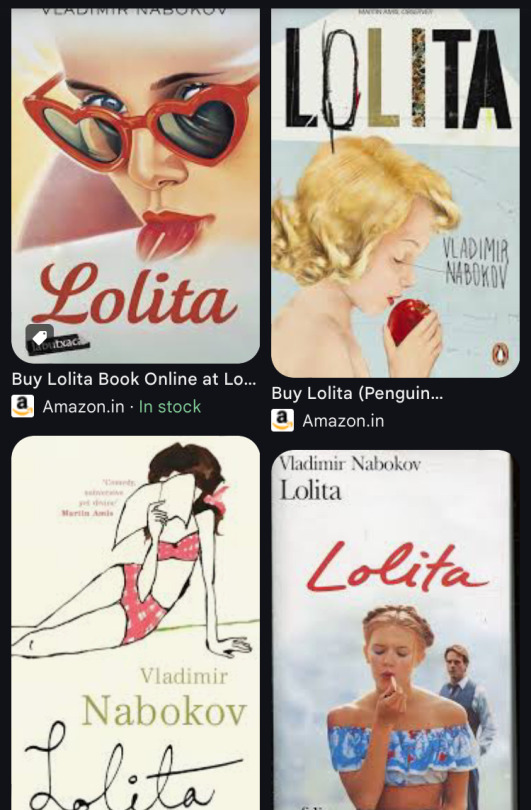
When I first read the virgin suicides I thought it was a great work of satire. I adore the Lisbon girls with all my heart, I see a part of myself in all of them by varying degrees. The boys who claimed they loved these girls, only saw them as some fantasy. Even in death they never truly respected any of them. How when they found Cecelia's diary, instead of trying to make sense of why she killed herself, they selfishly searched for their own names. I loved the irony of the boys claiming that they loved these girls when they didn't know anything about them. It showed how shallow and surface level their “love” was. I thought the author, Jeffery Eugenides really understood me because as a girl it feels as though you’re only loved if you’re sexualised and how much sympathy you deserve is dependent on how attractive you are, as if that’s the only value you have to offer. But in reality he didn't mean any of the things the boys did to be interpreted as satire. According to him, peaking through windows, stealing used tampons, joking about groping dead girls, these grown men still picturing those little girls years later while they had sex with their wives etc was supposed to show that teenage boys are not disgusting horny dogs, but romantic softies (if anything this made me think teenage boys are much more repulsive than i thought). According to Eugenides the book is satire, but in the sense that you never know what was going through a person's head when they committed suicide and you can't make sense of it no matter how hard you try. Everything about how the boys viewed the girls was not satire and was to be taken at face value. This really broke my heart, an author who I thought really did get me and understood me, ended up making me feel watched instead of seen. I guess this is where "death of the author" comes into play. La mort de l'auteur is a 1967 essay by Roland Barthes that basically argues that instead of only viewing a work of art through the artist's eyes and keeping only their intent in mind, the viewer can interpret the art through their own eyes regardless of what the artist originally intended. I want to, I really do but I can't help but feel that intention matters and no matter how hard I try to separate the art from the artist I simply cannot.
It's so fascinating to me how Lolita which is supposed to be from the perspective of an unreliable narrator was taken at face value and the virgin suicides which was to be taken at face value was perceived as satire.
The same irony can also be seen in the movies. The director of Lolita didn't get her at all, even he thought she was some kind of a seductress instead of a child that was raped and abused repeatedly by a man that was supposed to be a father figure while the virgin suicides movie was so much better than the book, Sofia Coppola, the director, understood the Lisbon girls so well and she did them justice.

#English is not my first language so please dont be mean#sorry for the long ass rant#I'm so tired i would make this pretty but i have 0 energy#lolita novel#lolita is not a love story#vladimir nabokov#lolita by Vladimir Nabokov#bookblr#book analysis#book rants#books and reading#the virgin suicides#lolita#the virgin suicides by Jeffrey Eugenides#sofia coppola#jeffery eugenides#book review#lisbon girls#cecelia lisbon#lisbon sister#humbert humbert#dolores haze
268 notes
·
View notes
Text
TG on Criston Cole: "He's not the step dad he's the Dad Who Stepped Up! 😍"
Criston Cole in F&B: Literally Humbert Humbert (or, at best, Woody Allen).


Afterward, he gave the seven-year-old Princess Rhaenyra the victor’s laurel and begged for her favor to wear in the joust.
“Ser Criston protects the princess from her enemies, but who protects the princess from Ser Criston?” *
*said at a point when Rhaenyra is the same age as Dolores Haze btw.
Among the changes to the character's ages in HOTD, it's ageing up Rhaenyra when she first meets Criston Cole that grosses me out the most. And to add insult to injury, they don't even get an older actor to play an older Criston Cole after the time jump - Emma D'arcy is actually older than Fabian Frankel.
And to those who say sympathetic jilted lover Criston Cole is more interesting... well we've heard that story before. With Jorah Mormont's depiction in GOT, for starters. And everywhere else in our culture, men like Criston Cole are afforded sympathy and fascination (it's honestly a relief that most audiences outside of tumblr thankfully hate Show Criston - pls leave the actor alone though), while their victims are depicted as seductive temptress 'nymphets'.
Look no further than JK Rowling's favourite 'tragic romance'.
(sure jk, trans women are the problem, but humbert humbert isn't?)
Book covers and film adaptations of Lolita love to age up and sexualise Dolores and completely miss the point, but Vladimir Nabokov named actress Catherine Demongeot as the most book-accurate casting. Who looks very disturbing up against the 1997 film's casting for Humbert Humbert:
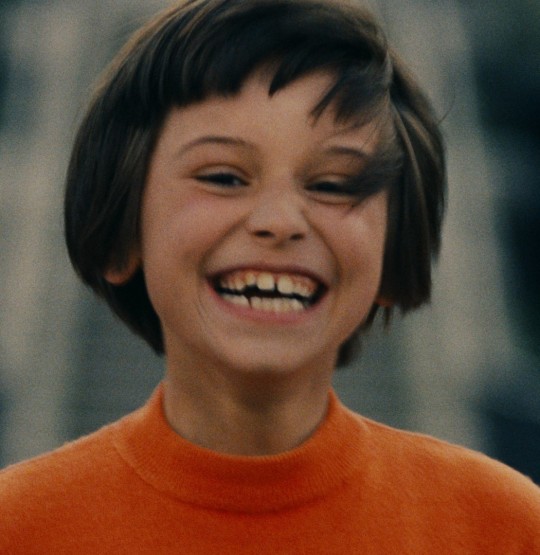

She was Lo, plain Lo, in the morning, standing four feet ten in one sock.
And wouldn't you know it, Daemon returns from the Stepstones when Rhaenyra (15) is around the same age that Dolores was, when Clare Quilty convinced her to run away with him.
And when Criston proposes to Rhaenyra ahead of her upcoming marriage to Laenor, she is again the same age as Dolores (17) when Humbert tries to get her to leave her husband for him.
Obviously Rhaenyra's story is by no means directly comparable to the horrific abuse suffered by Dolores Haze, and besides we don't know precisely what happened between Rhaenyra and Criston*. But Rhaenyra was also much much younger (7) when Criston came into a position to start grooming her, and at the end of the day she was still only a 12-year-old child when rumours of a sexual relationship began. The parallels are there, and CSA is a common issue throughout GRRM's work.
It certainly wouldn't be the first time GRRM has made a reference to Lolita in ASOIAF:
You see, she had absolutely nowhere else to go.
Littlefinger and Lord Petyr looked so very much alike. She would have fled them both, perhaps, but there was nowhere for her to go.
On Septon Eustace and Mushroom
*I do find it interesting to note that of the two accounts of Rhaenyra and Criston's 'split' (by two people who weren't in the room), it is Septon Eustace's account that puts Rhaenyra in a more favourable light. Mushroom tells the more pornographic account that casts Rhaenyra as the one trying to seduce Criston. Meanwhile Septon Eustace insists that Rhaenyra was the one to refuse Criston - including arguing that if his vows as a Kingsguard mean so little to him, then why should she trust he'd honour any marriage vows?
As I often argue, interpreting F&B is far more complicated than insisting one account always tells the truth, one account always tells propaganda etc. Neither account obviously views the relationship through the lens that Rhaenyra was only 7 when they met, neither of them care to raise concerns of grooming and CSA . This is still the same world after all that thought it was perfectly acceptable for a 12-year-old Laena to marry Viserys, or for a 12-year-old Sansa to marry Tyrion. This is the world that spread rumours of Rhaenyra's lost virginity when she had barely begun puberty.
Mushroom is clearly pro-Rhaenyra, and clearly fond of her (he wants us to know for instance how good it was to hear her laugh, his account expresses the most how broken she was after Luke's death) - but he's writing his account years after her death, and most likely after departing Aegon III's court for White Harbour. His priority, as a dwarf and entertainer, is to write was sells, and salacious tales sell. Just look at the pornographic tales the slavers spread of Daenerys, or how Shae depicts Sansa as a seducer withholding sex to convince her husband to commit regicide, or the play Arya performs in that bawdily depicts Tyrion raping Sansa for the masses. Mushroom at least wasn't the one to actually come up with the Brothel Queens story** - Archmaester Gyldayn credits Aegon II with making that story up - but any loyalty Mushroom had to a long-dead woman wasn't enough to stop him including a popular story. Mushroom's gotta eat.
**to those who still insist the story is true (despite Gyldayne attributing the rumour to Aegon II), do you honestly think if the Queen and Queen Mother had actually been gang-raped there wouldn't be multiple sources verifying it and expressing outrage?
Septon Eustace meanwhile is a misogynist who hated Rhaenyra and wished to justify his allegiance to the Greens. Which is why he'll make up ridiculous stories about Rhaenyra cutting herself on the throne while wearing armour, or Sunfyre eating her in 6 bites and leaving behind one leg for the Stranger, or how Rhaenyra got fat and ugly after giving birth to 5 children. Which is why he'll have Aegon II say "what sort of brother steals his sister's birthright?" - a statement that doesn't match with the rest of his documented words and actions:
Word of Rhaenyra’s coronation reached the Red Keep the next day, to the great displeasure of Aegon II. “My half-sister and my uncle are guilty of high treason,” the young king declared. “I want them attainted, I want them arrested, and I want them dead.”*** Cooler heads on the green council wished to parley. “The princess must be made to see that her cause is hopeless,” Grand Maester Orwyle said. “Brother should not war against sister. Send me to her, that we may talk and reach an amicable accord.” Aegon would not hear of it. Septon Eustace tells us that His Grace accused the Grand Maester of disloyalty and spoke of having him thrown into a black cell “with your black friends.”
***spoken in response to Rhaenyra publicly offering him a pardon
So Eustace has a tendency to demonise and whitewash - which is what makes it interesting when he passes on the opportunity. For example, why would he refute the rumours that Rhaenyra's children are bastards? Surely that claim would have supported his case against her? Why does he give quite a positive, even glowing, account of Jacaerys? Probably because he approved of and genuinely had no issue with Jacaerys, other than that he didn't believe the throne could pass through the female line anyway. True or not, he didn't need to claim Jace as a bastard, and Jace's actions didn't fit any cultural stereotypes. Because it seems there are certain lines Septon Eustace won't cross.
So Septon Eustace has some commitment to telling the truth (some truths anyway). Which is why his own account of Aegon II often contradicts itself, as shown above.
So back to his account of Rhaenyra and Criston. Why not cast Rhaenyra a wanton seductress, trying to tempt Criston Cole away from his Kingsguard vows? Why depict Criston, a fellow Green, as an oathbreaker? Why tell us that Rhaenyra did the right thing, turning Criston down and even expressing disgust that he would abandon his vows? Because for all Septon Eustace dislikes Rhaenyra, casting her as a wanton seductress would be crossing a line. He doesn't need it to be against female succession - her great sin is being a woman who doesn't gracefully abdicate in favour of her brother, and that's enough.
And because his account is probably closer to what happened. While he wasn't in the room, no more than Mushroom was, he was in a position to hear about it from Criston. As a fellow Green, and above all as a Septon. Someone who Criston might confess to. And it is Septon Eustace's account that tells us Criston Cole was the one to slit Lord Beesbury's throat. While he may try (sometimes anyway) to sanitise Aegon II, he makes no such effort with Criston Cole. If you wanted to legitimise your support for the Greens but were unable deny their crimes, it makes sense to allow someone to be the villain.
And supposing Criston did confess, he probably would have displayed the same delusional self-pity and self-justification as Humbert Humbert. And Septon Eustace, just like everyone else in Westeros, certainly wouldn't have considered Rhaenyra a possible victim of grooming and CSA.
Just look at Catherine Howard as a historical example. When she was 13 she was molested by her music tutor, Henry Mannox:
“At the flattering and fair persuasions of Mannox, being but a young girl, I suffered him at sundry times to handle and touch the secret parts of my body, which neither became me with honesty to permit nor him to require.”
This 'affair' was used as evidence against her in her trial for adultery and subsequent execution.
The Princess and her White Knight
Again, we don't know what precisely happened between Rhaenyra and Criston. We don't know if their relationship is comparable to Catherine Howard and Henry Mannox, or if it escalated anywhere close to the horrors of Dolores Haze and Humbert Humbert. Or if anything actually happened at all, or maybe at least not till Rhaenyra was older. Maybe their relationship is more comparable to Soon-Yi Previn and Woody Allen, who had been her stepfather since she was 10.
We have snatches of the truth from Eustace and Mushroom, we have what we can determine of their access to the truth and their motives for telling their accounts the way they do. We have Rhaenyra's young age, Criston's constant access to her, the timing of the rumours, her later relationships with older men, the violent hatred Criston has towards her after she rejects him. We have the fact that CSA is a common reoccurrence in GRRM's work - Daenerys and Jorah, Sansa and Littlefinger, Jeyne and Ramsay, Tyrion and Tywin, Aeron and Euron. We have the salacious stories that are already spreading of victims like Daenerys and Sansa, and we can speculate how future maesters and septons and fools might write about them, the way they write about Rhaenyra.
Whatever happened, my understanding is that Rhaenyra was a child in a court that her stepmother was actively making a hostile environment for her. Who had to deal with the beginnings of puberty in this environment, where adults were already speculating on her sexuality, on top of all the other scrutiny she would face as heir. Yes she had a father who doted on her, but when it came to Alicent he always refused to take sides, he always tried to placate and please and keep the peace. Yes he was steadfast in his decision to keep Rhaenyra his heir, but he did nothing to reprimand Alicent, he allowed this hostile environment to flourish, leaving his barely pubescent daughter to deal with it on her own. Alicent even publicly quips about Rhaenyra's relationship with Criston Cole, and she gets away with it.
Daemon does not return from the Stepstones till after the 5th anniversary tournament Viserys throws for Alicent, when Rhaenyra is 14/15. Before then, Rhaenyra's main confidant, probably her only confident on the subject of Alicent, was her sworn shield and constant shadow Criston Cole. Whatever happened between them, she was young and emotionally vulnerable. And lonely. Yes she had a party of supporters at court - but what is that to a child? She needed a parent to confide in, and when it came to Alicent her own father could not be that parent.
We know Rhaenyra was a precocious child, 'bright and bold' and proud. But we also know that beneath that she was anxious - she was known to compulsively fidget with the rings on her fingers out of anxiety. What kid in her situation wouldn't be anxious? Just when did this compulsive habit begin? Rhaenyra may not have been in anywhere near as vulnerable a situation as Dany, but she was still a vulnerable kid. And so Criston would have been important to her.
He wants me, she realized. He loves me as he loved her, not as a knight loves his queen but as a man loves a woman. She tried to imagine herself in Ser Jorah’s arms, kissing him, pleasuring him, letting him enter her. It was no good.
It was a long kiss, though how long Dany could not have said. When it ended, Ser Jorah let go of her, and she took a quick step backward. “You … you should not have …”
My great bear, Dany thought. I am his queen, but I will always be his cub as well, and he will always guard me. It made her feel safe, but sad as well. She wished she could love him better than she did.
My bear, my fierce strong bear, what will I do without him?
My bear, she thought, my old sweet bear, who loved me and betrayed me. She had missed him so. She wanted to see his ugly face, to wrap her arms around him and press herself against his chest.
We don't know how much or in what way Criston took advantage of Rhaenyra's dependence on him, or how 'receptive' Rhaenyra might have been (friendly reminder that no matter how 'receptive' she might have been, it's still CSA). Again, it may be that nothing physically happened at all until Rhaenyra was 17 (after 10 years of grooming of course). Whatever happened, we can certainly imagine that Rhaenyra was devastated to lose him, and to Alicent of all people. He had been her confidant and her champion, he had been at her side since she was 7 years old, not long before losing her mother (who was the same age as Criston btw).
My understanding of Criston meanwhile is that he genuinely adored her for those 10 years as her sworn shield. That he was passionately protective of her, fiercely devoted to her, and possessive. Much like Jorah with Dany. Maybe, like Jorah, he tried to kiss her. Maybe much worse happened, and he deluded himself as many abusers do that theirs was a misunderstood romance. Maybe he never touched her at all, but fantasised about it. Maybe he convinced himself that he was a man of honour, maybe he spent those years waiting till Rhaenyra was older, by her side the entire time (cough, grooming).
Whatever happened, he was enraged that 10 years of grooming were ultimately unrewarded. He probably, deludedly, cast her just as cruel and selfish and ungrateful as Humbert Humbert did Dolores Haze.
Despite our tiffs, despite her nastiness, despite all the fuss and faces she made, and the vulgarity, and the danger, and the horrible hopelessness of it all, I still dwelled deep in my elected paradise - a paradise whose skies were the color of hell-flames - but still a paradise.
There is nothing more atrociously cruel than an adored child.
But I was weak, I was not wise, my schoolgirl nymphet had me in thrall. With the human element dwindling, the passion, the tenderness, and the torture only increased; and of this she took advantage.
Don't you love living in a world where multiple think pieces debate whether or not Rhaenyra abused Criston Cole? (Also a world where a book like Lo's Diary gets published...)
If there is any truth to Septon Eustace's account that Criston wanted to elope with her to Essos, then I can imagine that he wanted to possess Rhaenyra entirely for himself (however romantic he may have believed his motives). The 'black fury' that descends on him during the wedding tourney certainly tells us he is violently jealous to see Rhaenyra begin a relationship with Harwin. He probably stewed in fury while Rhaenyra's attention was on Daemon (maybe hypocritically casting him as the villain the way Humbert Humbert does Clare Quilty), celebrated when Daemon was banished, and grew desperately possessive at the thought of losing his exclusive access to her again. Much like Jorah:
“You have been a better friend to me than any I have known, a better brother than Viserys ever was. You are the first of my Queensguard, the commander of my army, my most valued counselor, my good right hand. I honor and respect and cherish you—but I do not desire you, Jorah Mormont, and I am weary of your trying to push every other man in the world away from me, so I must needs rely on you and you alone. It will not serve, and it will not make me love you any better.”
I can't believe I'm giving Jorah Mormont credit here, but at least he doesn't respond to rejection with violent hatred of Dany. Or at least, he hasn't yet.
Now Rhaenyra's relationship with Daemon is another matter, and will require another essay. In sum, there is a broad spectrum between 'pedophile' and 'healthy relationship', and when I say Daemon's relationship with Rhaenyra is healthier than her relationship with Criston I have to admit the bar is very low indeed. Though I do take into consideration GRRM's description of Daemon as a grey character, 'equal parts light and dark'. Anyone is at liberty to declare death of the author and interpret Daemon as they see fit, but authorial intent (however fallible you may consider it) is not irrelevant. That authorial intent is the foundation upon which the characters, relationships, events, themes etc is built.
Ultimately, Daemon was not in Rhaenyra's life between the ages of 8 and 15 - he was in a relationship with an adult Mysaria, and then he was off to the Stepstones until Viserys and Alicent's 5th anniversary tourney. This isn't to endorse whatever may have happened in the 6 months Daemon was in King's Landing before his banishment - however you interpret his actions and motives. But simply to say that when it comes to grooming and abusing pre-pubescent to early-pubescent girls (oh this has been a disturbing essay to write) - Criston wins the "Creepy Even By Child Brideros Standards" Award.
So... is Criston the Step-Dad Who Stepped Up? Sure, if your Step-Dad is Humbert Humbert or Woody Allen.
#hotd critical#anti criston cole#rhaenyra targaryen#dolores haze#humbert humbert#lolita#vladimir nabokov#pro team black#anti ryan condal#oh a more sympathetic criston cole is more interesting is he?#there are two film adaptations that completely missed the point of nabokov's book I think you'll love#team green nonsense#tw csa#not saying daemon is clare quilty btw but I couldn't help but note the similarities in the timing#septon eustace#mushroom#jorah mormont#cw csa
54 notes
·
View notes
Text



“Zazie dans le Métro” de Louis Malle (1960) - d'après le roman éponyme de Raymond Queneau (1959) - avec la jeune Catherine Demongeot, Philippe Noiret, Carla Marlier, Yvonne Clech, Vittorio Caprioli, Nicolas Bataille, Antoine Roblot, Annie Fratellini, Hubert Deschamps, Jacques Dufilho et les participations d'Odette Piquet et de Sacha Distel, septembre 2024.
#films#spirit#Paris#Malle#Queneau#Demongeot#Noiret#Marlier#Clech#Caprioli#Bataille#Roblot#Fratellini#Deschamps#Dufilho#Piquet#Distel
8 notes
·
View notes
Note
Coucou :D Pour les demandes livresques si ça ne te gêne pas : "🧾Quel monde fictif aimeriez-vous visiter et explorer si vous en aviez la possibilité ? " + "📖Quelle est votre adaptation livre-film préférée, et pourquoi ? " Merci beaucoup ! :D
Salut, merci pour les questions :D
🧾What fictional world would you love to visit and explore if given the chance?
Sans hésiter le monde du manga Aria de Kozue Amano. L'histoire se passe dans un futur où Mars a été terraformée et une réplique de Venise a été construite dessus. L'héroïne est gondolière. La ville regorge de beaux lieux et de secrets à découvrir. C'est un manga très relaxant et émouvant qui souligne la beauté de l'instant présent et les joies de profiter du passage des saisons.
📖What is your favorite book-to-movie adaptation, and why?
Je dirais Zazie dans le métro de Louis Malle. Ce film est complètement loufoque et me fait beaucoup rire. J'adore l'énergie de Catherine Demongeot. En plus, quand j'étais à Paris, je suis tombée complètement par hasard sur une des galeries qu'on voit dans le film.
Et sinon les films du Seigneur des anneaux. Je ne les regarde plus aujourd'hui mais j'ai beaucoup de bons souvenirs associés à ces films. Ils m'ont apporté une dose d'évasion quand j'en avais besoin. (Même s'il y a des trucs qui me font rager dedans, genre l'inaction des femmes au gouffre de Helm et dans tous les sièges, déso mais IRL ça ne se passait pas comme ça, et la place des femmes en général dans cet univers).
Bookish asks
4 notes
·
View notes
Text
THE 56 MOST BELOVED & POPULAR ACTRESSES OF WORLD CINEMA ! (OFFICIAL LIST-BASED ON INDIES SUBCONSCIOUS ASSESSMENT OF MOST CONSISTENTLY HIGHLY POPULAR ACTRESSES & BLOCKBUSTER FILMS OF WORLD CINEMA, INCL DATA FROM VARIOUS INDIES FILM LISTS & ALL OTHERS!)
Note: The point system used, to give audiences an idea of the magnitude of comparative popularities of listed actors, includes 2 factors:
1. A calculated AVERAGE of no. of tkts sold PER FILM in lead (80% weightage) & 2. No. of films released in lead (20% weightage)
(Also, the discrepancies in placements of the few actresses listed in American Popularity charts & World Popularity charts, arise due to the strict average rule adopted in this list, vis a vis the American or Bollywood Popularity ratings where different weightages were given for every 100 films in lead or so. This to minimize the bias from cultural cinema viewing preferences in different countries).
http://www.imdb.com/list/ls520802584/
1. .Elizabeth Taylor 2. .Ingrid Bergman 3. .Barbra Streisand 4. .Juliette Binoche 5. .Francoise Arnoul 6. .Se-bin Son 7. .Yi-yeong Shim 8. .Da-in Yoo 9. .Eun-Sook Sunwoo 10. .Norma Shearer 11. .Song Wok-Suk 12. Ji-young Seo 13. .Natalie Portman 14. .Sol-mi Park 15. .Soo Ae 16. .Audrey Tautou 17. .Seo Hee-young 18. .Colette Marchand 19. .Vera Clouzot 20. .Valentine Tessier 21. .Simone Renant 22. .Greta Scacchi 23. .Camille Cottin 24. .Park Soo-Jin 25. .Sophia Loren 26. .Woo-seon Seon 27. .Gabriella Giorgelli 28. .Francine Mussey 29. .Lola Creton 30. .Dolly Scal 31. .Michele Moretti 32. .Greer Garson 33. .Mylene Demongeot 34. .Franca Pasut 35. .Laurence de Monaghan 36. .Catherine Serre 37. .Sarah Douglas 38. .Pauline Polaire 39. .Marion Cotillard 40. .Marie-France Pisier 41. Jane Loury 42. .Melanie Thierry 43. .Suzy Pierson 44. .Anna Galiena 45. .Alice Isaaz 46. .Pamela Franklin 47. .Da-kyung Yoon 48. .Giorgio Moll 49. .Beatrice Romand 50. .Renee Heribel 51. .Da-Hyun Kang 52. .Caroline Cellier 53. .Catherine Deneuve 54. .Martine Carol 55. .Graziella Galvani 56. .Isa Miranda
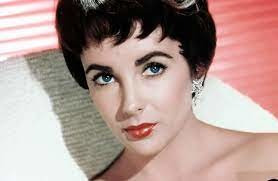




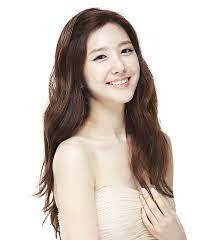



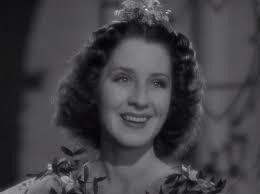



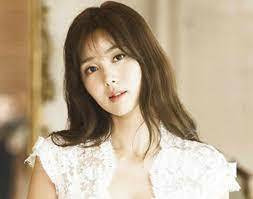
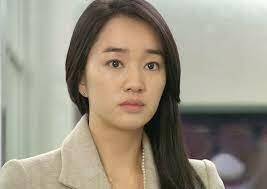




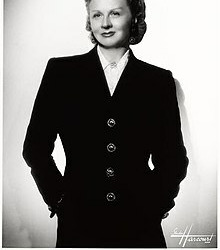

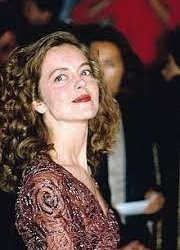

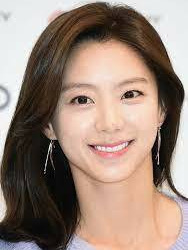
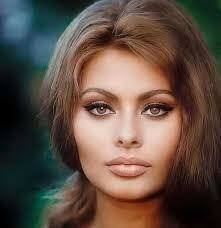
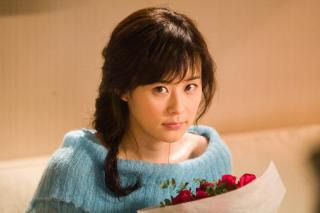
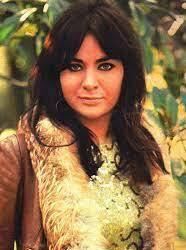

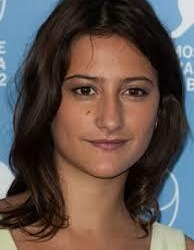

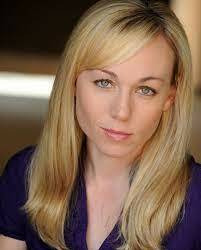
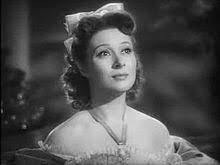
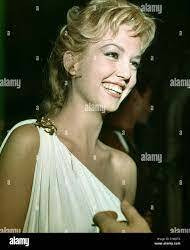
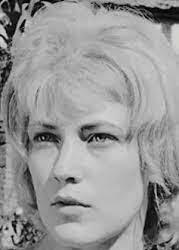

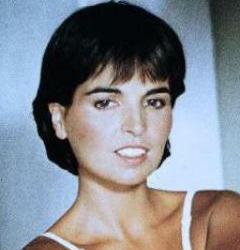

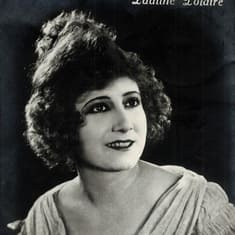
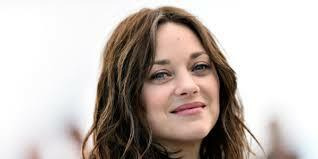
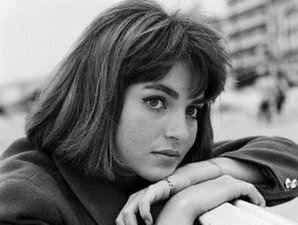







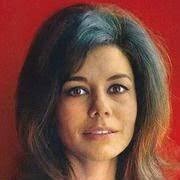




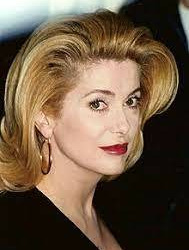
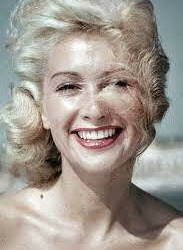
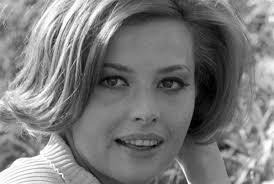

2 notes
·
View notes
Text
opening the lolita tag like

#this also goes for#dolores haze#zazie rly was the better adaptation of lolita#catherine demongeot#nabokov was so right
12 notes
·
View notes
Text
1960 : Catherine Demongeot incarne "Zazie dans le métro" | Archive INA
youtube
0 notes
Text

Zazie dans le Métro (1960)
8 notes
·
View notes